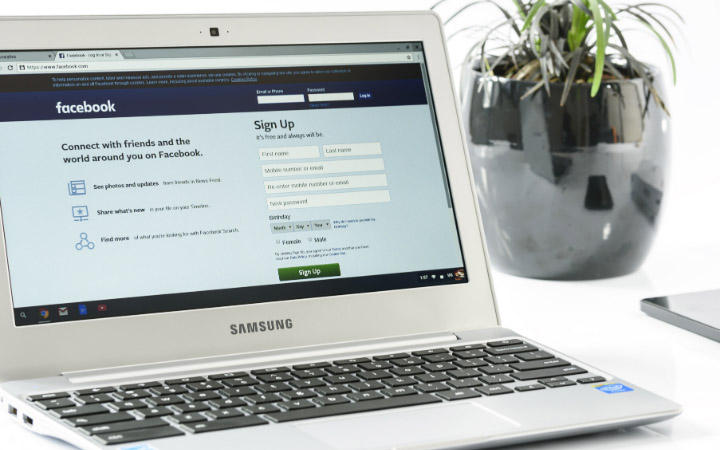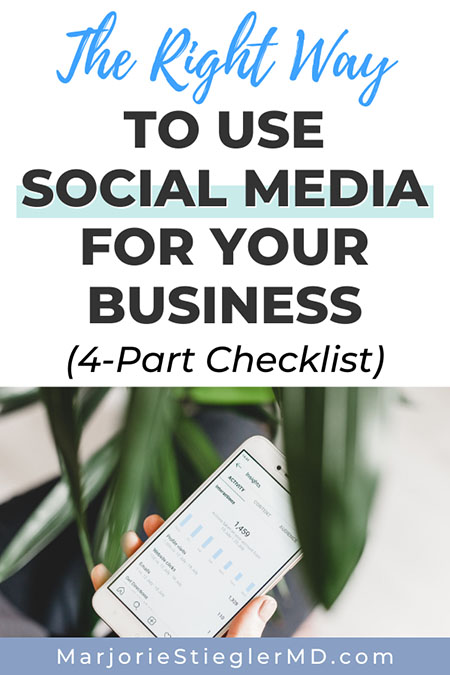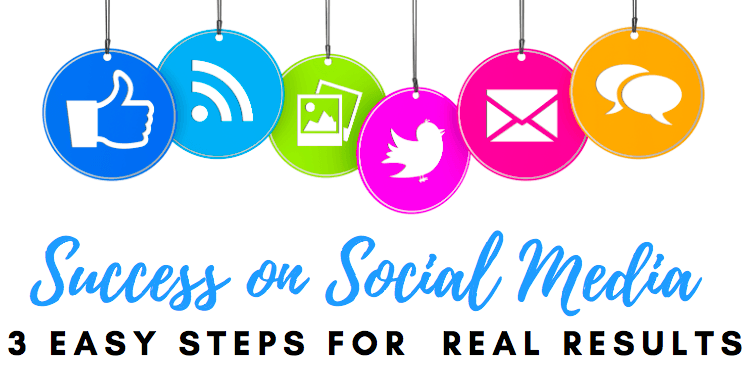Hey there, I am so glad that you have joined me on this episode of The Career Rx. Today I’m sharing a four-part checklist to be sure you are using social media the right way for your business.
In This Episode of The Career Rx We’ll Discuss:
- 3 reasons you don’t want to be on all social media platforms for your business.
- Where you’re spending your time on social media.
- How to use your social media time wisely – leveraging your social media posts and interactions in the right way.
- Improving the branding of your social media profile.
- Ensuring your time and effort on social media results in a positive ROI.
- Bonus social media tip.
LISTEN TO THIS EPISODE:
SUBSCRIBE TO THE CAREER RX PODCAST:
Want to get access to the latest podcast? Subscribe on your preferred podcast player…
Apple Podcast | Google Podcast | Spotify | TuneIn + Alexa | iHeart Radio
TRANSCRIPT AND SHOW NOTES (Using Social Media the Right Way for Your Business: 4-Part Checklist)
There are many right ways when using social media for business, however, so many of my students, listeners and people in my audience say social media is a major challenge for them.
This means they could very well be using social media in the wrong way.
They say it’s very time consuming, they’re not sure what to do on it and it doesn’t seem to be delivering an ROI in terms of their business or professional goals.
This episode is based on a question, however, I already knew this question exists in the minds of so many people, but Melissa from Santa Monica wrote to me and asked me,
“Do I need to get on TikTok? It seems like everywhere I look, people are on TikTok, and I just can’t bring myself to do it. It’s not my style, but I can also tell that the people who are getting in early are getting the most followers. Should I bite the bullet or keep doing what I’m doing?”
That’s a great question. My short answer is to keep doing what you’re doing if it’s working for you.
My longer answer is going to be considered in this four-part checklist – to see whether you’re using social media the right way for your business.
There’s going to be new social media platforms all the time. There are some that are solid and not going anywhere, and others that will be new.
They may be effective. They may be fads, but you don’t want to spend your time chasing those new shiny objects.
You Should Not Be on Every Social Media Platform
Many of you listening already know I’m a big believer in not being on every single social media platform for your business. It takes an awful lot of time and it is very time consuming, even with some of these services that you can get that are supposedly going to syndicate your content everywhere.
Now, because being knowledgeable about social media platforms is actually part of my own business, I do have accounts in many more places than I actually use.
Why?
I do experiments on different social media platforms from time to time, but the core of my professional activities on social media is really very focused.
So, make sure to listen to this episode all the way to the end as I’m going to give you a little secret about social media, and how there is so much more than meets the eye.
This episode will help you understand whether you are just on social media or whether you are leveraging social media strategically for your business.
Almost everyone is on social media, but the real question is…
Are you leveraging social media strategically for your business and is social media an effective tool for your business?
Now, I want you to repeat after me:
You do not need to be everywhere all the time!
In fact, you should not be everywhere unless you have a massive social media management team.
Using Social Media for Business: 3 Reasons You Don’t Want to Be on All Platforms
1. Each platform has its own personality and format.
Images, text, hashtags, and even user account names are not optimized for sharing across multiple platforms.
So, unless you want to look very unprofessional, you’re going to have to change them or have someone else change them for you.
You’ll have to:
- Resize images
- Modify text length
- Adjust the conversational tone
- Change hashtags (the same hashtags are not always effective across different platforms)
- User tag functionality is not the same and tags don’t cross over.
This is a good reason for you to try to keep that consistency if you can, but it’s not always possible.
So, having multiple social media accounts takes some optimizing and manual effort.
2. Your audience is not on all social platforms.
The other reason you don’t need to be everywhere all the time is that your audience is not on all social platforms, I promise.
They are on one or two primarily, maybe on three.
When you think about the people using different platforms there are different demographics for each one. You want to choose the social media channel where your target customer is engaging.
This is where you’ll want to focus your efforts.
I promise you, your target audience is not everywhere. They are likely not on TikTok, however, if they are you will absolutely want to have a presence there.
So, do your homework to determine the top social media platform that your ideal audience spends time using.
3. Being on every social platform means you’ll have to be social on every platform.
The third and final reason you do not need to be everywhere all the time is people expect you to engage with them and reply. This takes up a lot of bandwidth as you’ll have to have conversations and monitor notifications across too many platforms.
Even if you have software that brings all notifications to one dashboard, it’s still an awful lot of work.
And, I don’t think it’s a good idea to automate this with software or by outsourcing.
You and your brand voice can not be replicated by a third party. This would affect how you connect directly with your customers.
Sure, there are certain questions that can be outsourced, such as customer service questions about your business, I wouldn’t recommend that you build those initial social media relationships in an outsourced way.
Your personality is what’s going to connect you with your audience.
If you had an eight-figure business, sure, I can definitely see the benefits of having a huge team that takes care of all of your content and is able to mimic your brand voice and tone.
Even so, there will be something missing between that person to person interaction in the early stages of growing your social media platforms and connecting with your customers.
Using Social Media for Business: The Right Way (4-Part Checklist)
Now, let’s look at my four-point checklist, so you can review your social media activities with a critical eye.
I want you to figure out if you are just on social media or if you are strategically leveraging social media for business success and growth.
1. Where Are You Spending Your Time on Social Media?
What does the word ‘where’ even mean on social media?
- A specific platform (Facebook, Instagram, Twitter, etc).
- A group within a social media platform, for example, Facebook groups or a LinkedIn group.
- It could be around a hashtag, which although is not a closed space, it’s a way to mark conversations. (Some people return again and again to certain hashtags).
You are the only person who knows where your ideal audience and ideal customer is.
This is because only you know exactly what you offer and you have hopefully done the work to figure out your ideal customer, your ideal product, your branding, and your development.
If you haven’t done this, I strongly recommend that you do.
Branding resources that will help:
You are the one who knows what you bring to the table. You know what your ideal customer wants and what they value.
So, you ought to know where they are on social media. This is where you should be spending plenty of time, even though this might be a departure from your norm.
This is what I hear all the time from my students…
“How do I fit the time in to be on social media and how do I even do this?”
Using social media for business can mean spending quite a bit of time each day. This does not mean spending all your time with your friends and colleagues! That is not leveraging social media for your business, although it can be a great way to learn, network and stay connected.
Here’s the number one challenge I hear from students whose businesses are not getting traction – they don’t have time to use social media well for their business.
So I will push back and I say, Yes, you do! You do have the time, but you’ve been spending your time in the wrong places and on the wrong activities.
2. Are You Leveraging Your Posts & Interactions in the Right Way?
You may perhaps have a lot of content if you’ve been at this for a long time. It could be blog posts, video, podcast episodes, etc.
Take advantage of this content you have when reading people’s posts on social media.
When you see people asking questions in their online communities, you can help them out and reply with helpful content you already have. This is the perfect opportunity to link to an article, a roundup or a video you created.
Always Provide Value
Of course, you should be sharing your content in a way that is helpful and not spammy. You want to provide some useful tidbits that provide value. This lets them know that you have some subject matter expertise.
I’m not recommending that you sell on any forum (unless it is your own group). Many of you have your own group or private groups on social media and in that case, you can ‘sell’. Otherwise, you want to be very respectful of the rules of the group.
If it’s not your own group make sure to understand the norms and the etiquette in the group so you don’t look spammy.
Some things may be more appropriate for a direct message. Rather than leaving a link in a comment, you may want to just leave some helpful information. Then mention you have an additional resource that you can share via DM if they’re interested.
For most groups, this is an acceptable way to give a helpful piece of information. Just be mindful of how you let people know you have it.
Make sure you provide a robust answer that proves value, as people will naturally want to check you out. If they see you as a person who shows up on a regular basis, who has really insightful and thoughtful answers, they are more likely to be interested in what your business offers. In a case like this people will seek you out.
Tip When Sharing URLs:
If you’re going to be sharing URLs in the comments section of a group or through DMs I recommend that you have those links shortened and branded. The same is true if you’re going to be speaking the link, as you would on video or webinar.
Examples & Resources:
I recommend (and use) a service called PrettyLinks.
This allows me to change long URLs into a shorter one that’s easy to say and remember.
Like this: https://marjoriestieglermd.mykajabi.com/industry_insider_webinar_registration – for my Industry Insider online course (for physicians interested in non-clinical careers).
To this: https://www.marjoriestieglermd.com/industryinsider.
PrettyLinks allows me to take unattractive links, like my affiliate link https://prettylinks.com?aff=23551 and turn it into a branded link https://www.marjoriestieglermd.com/prettylinks.
These go to the same destination, and I earn a referral commission if people decide to sign up for PrettyLinks through my pretty link – see what I did there? 🙂
When you copy the full URL of something it’s not very attractive.
It can be super long, which can be very distracting. So it’s really nice to be able to share something that is short and branded.
It could perhaps have your domain name, forward slash and then a clear indication of a subject.
Once you have your links set up this way, you can set up keyboard shortcuts on your phone, or have a running document that makes it easy for you to access, copy and paste the links. This makes it easy when someone reaches out and asks for them.
When you are adding real value to a conversation with generous advice people and will want to connect with you. This means looking for you on Google and social media platforms.
–
If You’re Not Easily Found on Social Media…
I’m going to take a quick digression to say if you’re not easily found, there are a lot of fixes for this inside The Branding Rx and my website. It’s imperative that you are easy to find, but for the purpose of this podcast, I’m assuming you’re all set.
If you are easy to find people will find you. So, it’s important to be sharing value, to be generous with information and to be ready to follow up with people.
Generally speaking, groups are not a place to sell, to spam or to be aggressive. They are a place to add value as you want your ideal customers to be familiar with you, your content, your style, and to think of you as the expert you are.
3. Can People Tell You Have a Business Based on Your Social Media Profile?
When a person does seek you out, and they look at your profile page of whatever social media platform you’re on, can they tell immediately that you have a business?
This is something a lot of people seem to shy away from.
Let me ask you this…
- Do you have a clear, consistent brand language that is readily apparent in your bio, on your website and elsewhere?
- Can people tell from the nature of your own posts on your feed, that you have subject matter expertise?
- Do you link to your business from your profile?
A lot of people have information and experience but that’s not connected to their business, so make sure your profile is updated with your current business info.
When people check out your profile you want them to know right away that you have a business related to what you’ve been posting on social media.
This is how people can engage with you and explore what you may have to offer.
–
Shout out to my Branding Rx students who already know how to do this and the alumni from The Speaking Rx, which focuses on this.
If you’re new to branding or if you haven’t done it in a while here’s a resource to help you create that brand language: FREE WEBINAR: Intro to Professional Branding.
These are the important elements that help people understand who you are in terms of your expertise, credentials and perspective.
Your branding will also communicate who you help so people will know if they’re your ideal customer and how they can benefit from working with you.
4. Is Your Time & Effort Spent on Social Media Resulting in a Positive ROI?
Is your effort and time on social media getting the job done?
If you haven’t really thought about this before, a lot of people get this wrong.
The job of your time on social media is not to grow your platforms.
It’s not to get more followers or to go viral. This is not the job of your activity.
The only job of your business on social media, your efforts for strategically leveraging social media for your business, is to drive traffic and conversions for your business.
The traffic I’m referring to should be to something that directly connects to the growth of your business. It could be to your:
- Website
- Landing page where you accept payments
- Scheduling app where people book meetings with you
- Online store
- Online course
- Speaker page (if you are a public speaker)
The number one job of your time on social media is to get traffic to where you can convert people.
Once people get to one of your destinations you want them to take action.
The ultimate action is to buy something. This is how people make money and keep their businesses alive – through some kind of transaction. However, sometimes the first conversions are free, and one of the most important conversions is when someone opts into your email list.
You do this right by giving them a reason to opt-in. You’ve already demonstrated yourself as having high value and now you want to let them know there’s something for them to subscribe to – some kind of opt-in freebie. It could be your podcast, a resource, a free course, a helpful checklist or download, a free webinar, etc.
This is a free value-add that is related to your business. This really helps increase your email subscribers.
The reason this is so important is you can communicate directly with people on your list.
An email list is something you own and is not impacted by social media platform algorithm changes. Growing your platform on social media is not quite the same, as you do not have a direct way to communicate with them when you choose to.
In fact, this is SO important that I have created an entire step-by-step video guide on how to grow your email list using a high-value opt-in freebie.
Using Social Media the Right Way for Your Business: Let’s Recap
Having a huge social media platform is not the goal and having a post go viral is also not the goal.
The real goal:
- Be in the right place where your actual customers spend their time on a daily basis.
- Give value so people recognize you as the person who can help them. Do this by consistently sharing and being generous in social media groups so people seek you out.
- Your ideal customer should be able to tell what your business is by seeing your profile, which will directly connect them with your website.
- People will take action on your website/destination page by opting into your email list, signing for a freebie, enrolling in a course or contacting you directly.
Bonus Tips: The Social Media Secret I’m Sharing!
But before I wrap up, I did promise you guys a social media secret.
Many people are obsessed with numbers – the number of followers, number of comments, shares and likes. This data is nice to have. This can be important as these numbers increase the reach of your posts, which helps them perform better, BUT these are not the most important metrics for you to focus on.
The most important metric for you to focus on is CONVERSIONS.
Social media marketing example:
Generally speaking, students who enroll in my courses are pretty private, and that’s for good reason. Most are physicians and they don’t want the entire world (partners, colleagues, bosses, patients) to know that they’re thinking about making a significant career change.
So very often they do not share, like or comment on my posts.
You know what they do instead?
- They click links
- Visit my website
- Listen to my podcast
- Watch videos
- Sign up for freebies
- Attend my webinars
- Enroll in one of my major courses
- And sometimes they’ll hire me to speak to their group or organization.
These are the invisible conversions that only I can see and these are the metrics that matter. These conversions turn into my students and paying clients.
This is the core of my business, and similar conversations are the core of your business.
It’s not how many likes you have, it’s more important to see if people are clicking through and converting.
Another social media example:
Recently, I had a paid offering that I shared across social media a handful of times. I got a few likes and one or two comments which is really not a lot of apparent traction. However this offer brought in revenue of over $10,000 in just 72 hours, so in my book, that’s a success!
This is really important to understand. You can get plenty of engagement, likes and love from friends and colleagues who are not your customers, but that does not directly correlate to your business success.
–
All right, go check out your own social media platforms and apply this four-part checklist.
Really think about the way you spend time on social media.
Many of my students and audience find this simple conversation to be extremely eye-opening when they really look at what they’ve been doing on social media.
–
Thanks for joining me on this episode of The Career Rx!
Please be sure to subscribe and leave me a review on Apple Podcast, Google Podcast or whatever podcast player you’re using to listen today. Also, be sure to send me your questions so I can answer them and give you a shout out on a future episode.
Bye for now,
Marjorie










